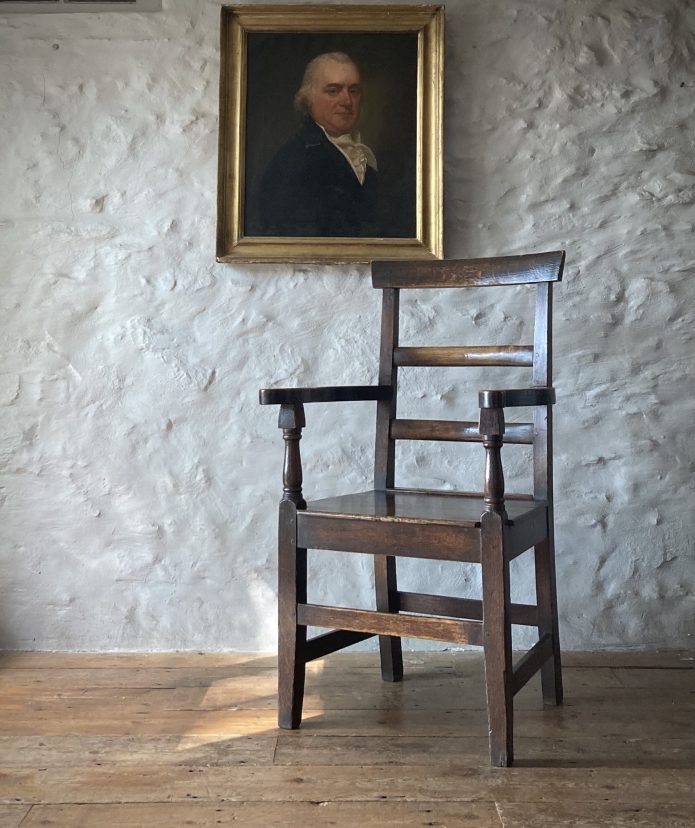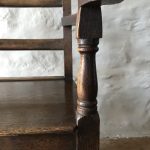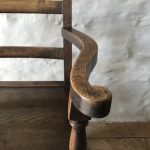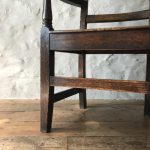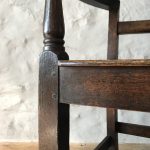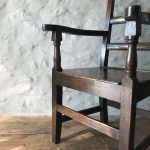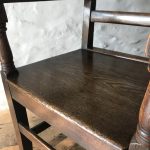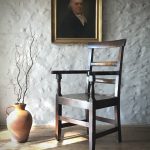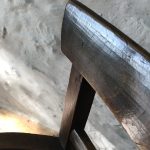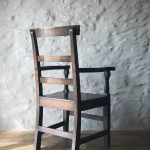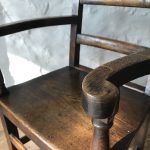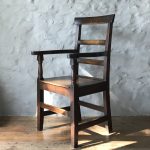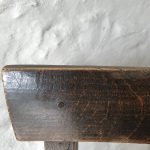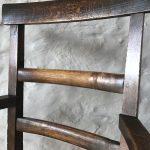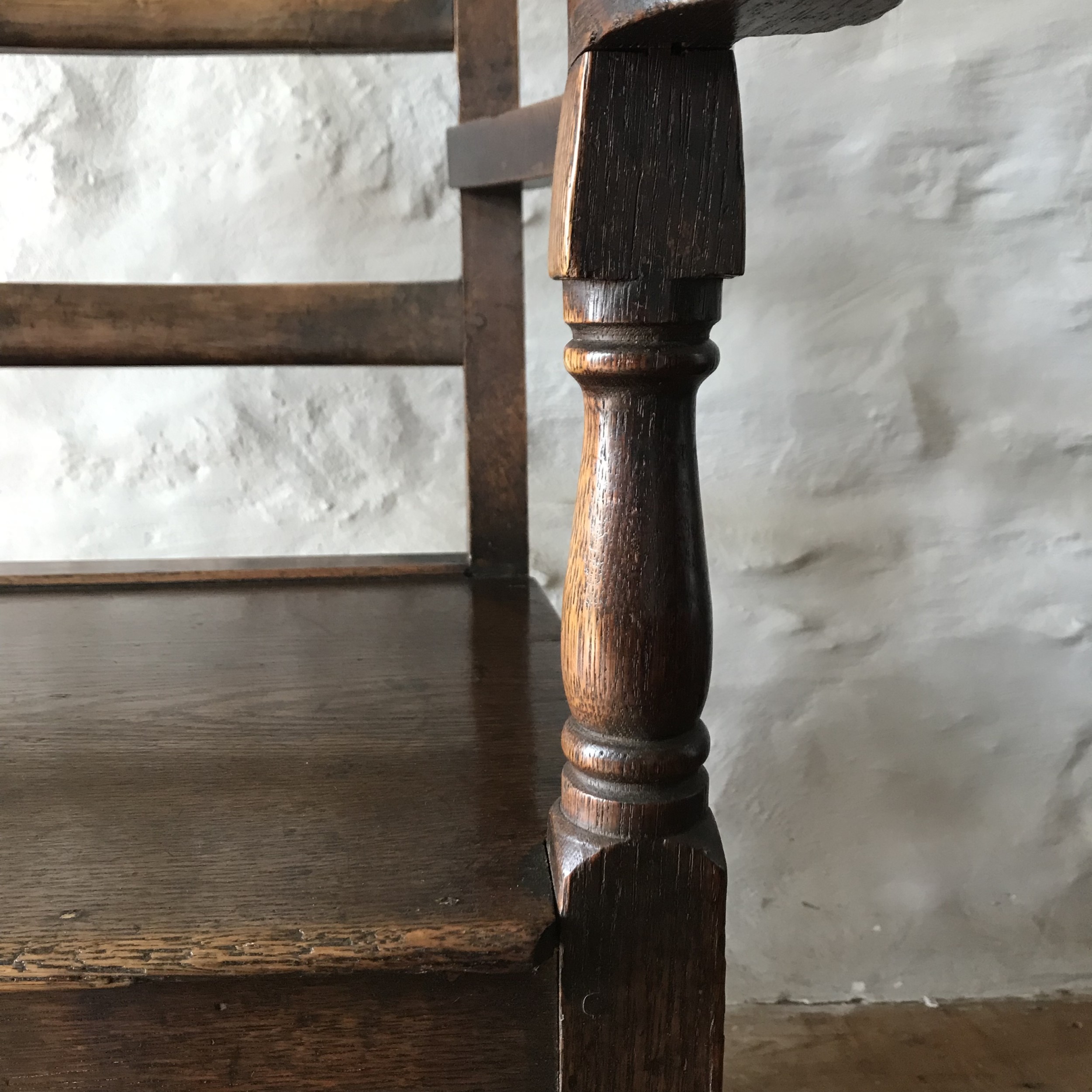A superb early 19th century Welsh oak arm chair. Made from oak throughout and with a good rich colour which is beautifully worn in places. The chair in excellent solid condition with all the original wooden pegs. A generous size and very comfortable.
West Wales circa 1820-40
23½” wide x 40¾” high x 21” deep / 59.7cm wide x 103.5cm high x 53cm deep
£1150 sold
See The Regional Furniture Society – Late Georgian Wooden-bottomed chairs in South Wales by Luke Millar. Link below
—————————————————————————————————————
From ‘Hen Dy Ferm’ – ‘The Old Farmhouse’ by D.J.Williams 1961. Translated by Waldo Williams
The wide and open chimney, at the top of which the sky could be seen, was also left untouched. Sometimes on a stormy night a spatter of wild hailstones would succeed in descending the chimney to shoot itself out, piff-piff-paff-paff, in the flame. Up the chimney was the cross-piece with the iron bar and links to hang the pots over the fire. Below was the wide hob. My father and mother saw to it together that there was always a good fire, a coal fire in winter usually, with a good log at the back of it. In summer it was a wood fire, just a bundle of kindling under the kettle or the oven as the need might be, set alight with a match. Except for the settle with its long red cushion, and my grandfather’s old armchair, where my father usually sat, it was heavy oak chairs we had to sit on, in a plain style, some of them without a doubt a century or two in age.
It will be seen that our equipage of physical comfort was simple and plain compared with the urban standards of to-day, when everything is fashioned and finished by the revolving machinery of the big factories of England. But every piece of furniture in our house—the deep old meal-chests upstairs, the tall boy, the linen-press, and so on—was of local oak and the work of a local craftsman with the mark of the careful chiselling of the eighteenth century along its selvedge pattern..




